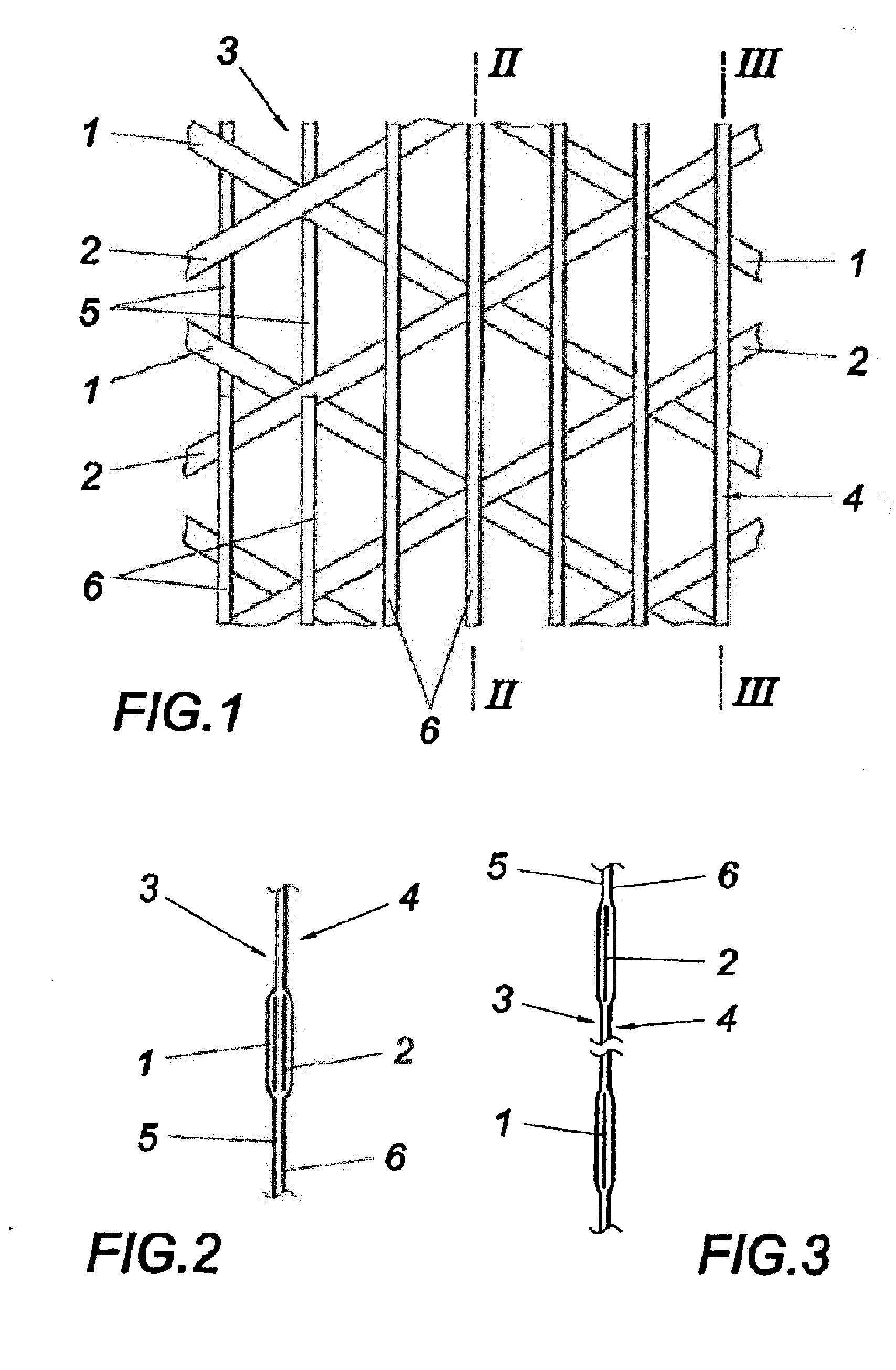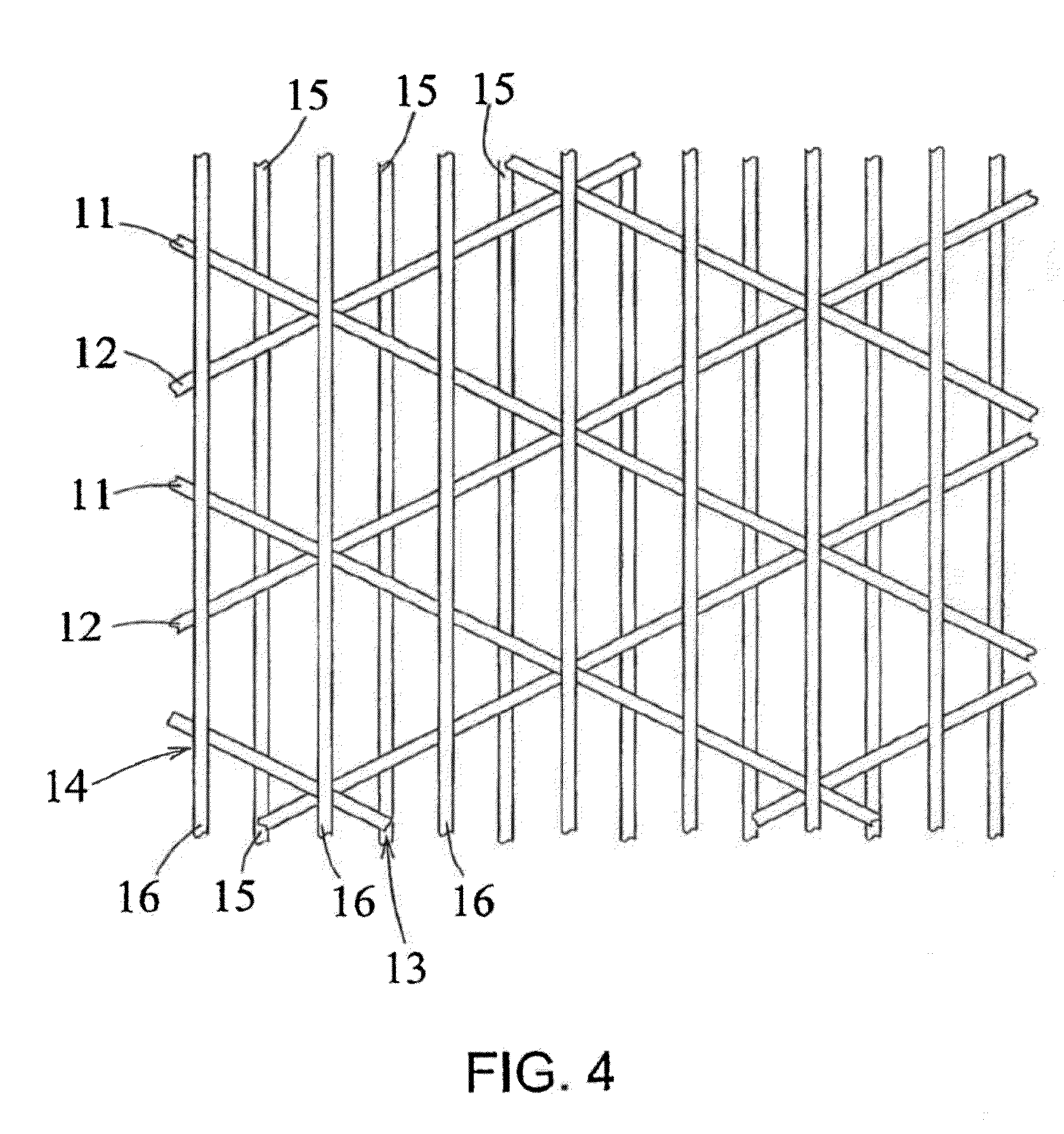Open Mesh Material and Bags Made Therefrom
a technology of open mesh and bags, which is applied in the direction of packaging goods, weaving, transportation and packaging, etc., can solve the problems of increasing affecting the quality of the bag, so as to reduce the carbon footprint of the multi-substrat bag, increase the strength-to-mass ratio, and reduce the weight of the bag
- Summary
- Abstract
- Description
- Claims
- Application Information
AI Technical Summary
Benefits of technology
Problems solved by technology
Method used
Image
Examples
examples
[0177]The superiority of the seam strength achieved through the use of the substrate described above was confirmed through several series of tests designed to replicate the end seals formed from fin seams on a bag. Except as otherwise noted, the tested material comprised a 1 in (2.54 cm) wide strip of a layered fabric comprised of first and second opposed outer layers of the above-described PET film material and four intervening layers of the “ultra-mesh material” representing the gusseted area at the ends of a gusseted four-panel bag. The composition of the ultra-mesh material varied from test to test. These strips of material were then clamped between two heated bars, designed to simulate the seal bars of a vertical form, fill and seal machine, at a clamping pressure of 700-710 kPa for specific periods of time or “dwell times”. The dwell times varied from test to test. The seam was subsequently pulled apart by pulling the joined materials from above and below until the seam failed...
PUM
| Property | Measurement | Unit |
|---|---|---|
| Temperature | aaaaa | aaaaa |
| Fraction | aaaaa | aaaaa |
| Fraction | aaaaa | aaaaa |
Abstract
Description
Claims
Application Information
 Login to View More
Login to View More - R&D
- Intellectual Property
- Life Sciences
- Materials
- Tech Scout
- Unparalleled Data Quality
- Higher Quality Content
- 60% Fewer Hallucinations
Browse by: Latest US Patents, China's latest patents, Technical Efficacy Thesaurus, Application Domain, Technology Topic, Popular Technical Reports.
© 2025 PatSnap. All rights reserved.Legal|Privacy policy|Modern Slavery Act Transparency Statement|Sitemap|About US| Contact US: help@patsnap.com



